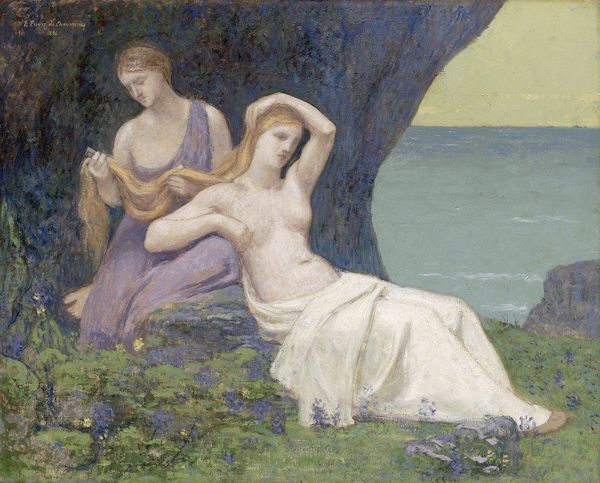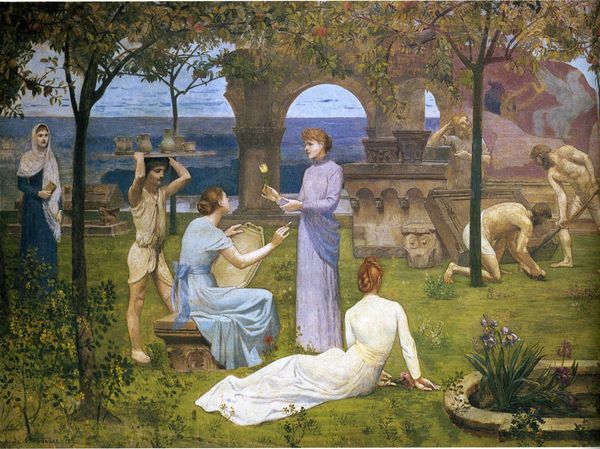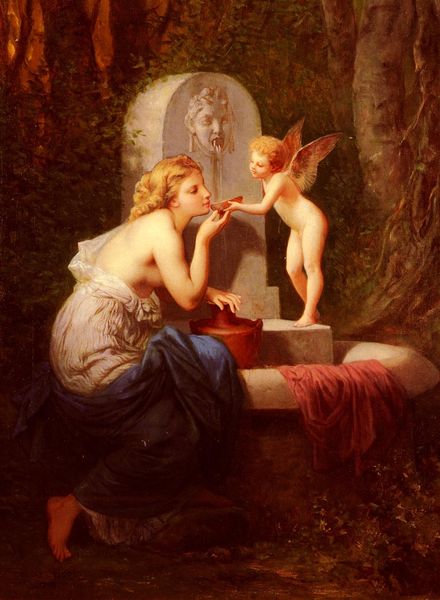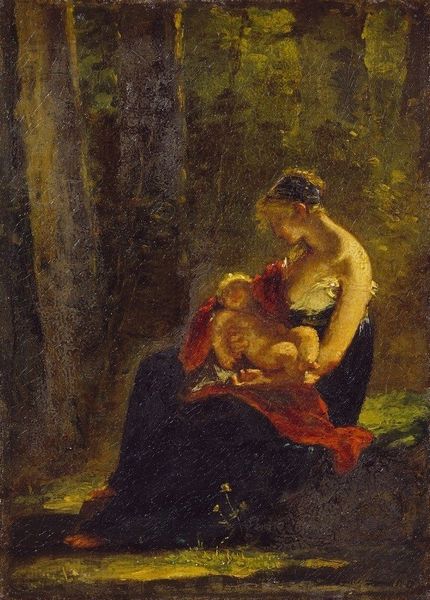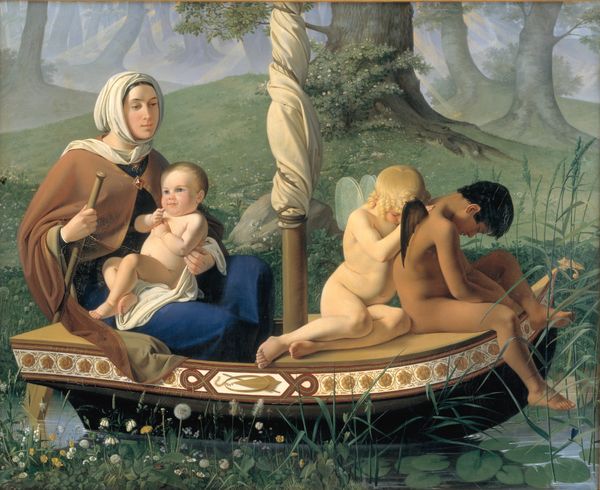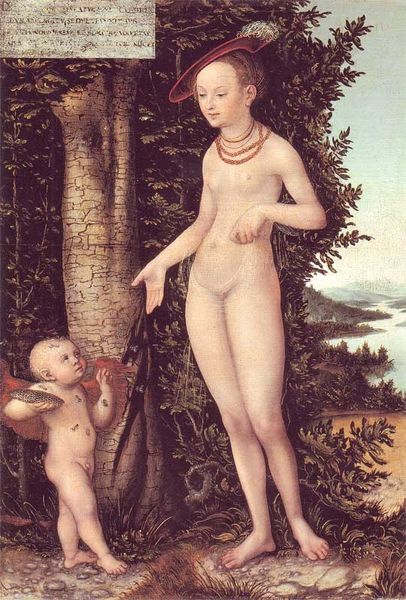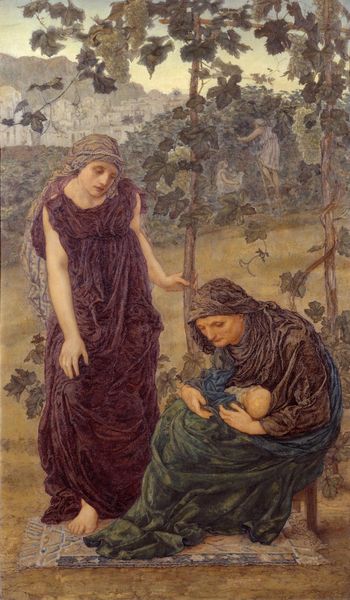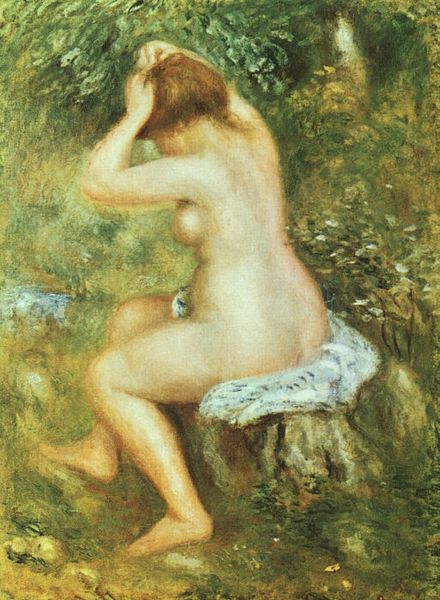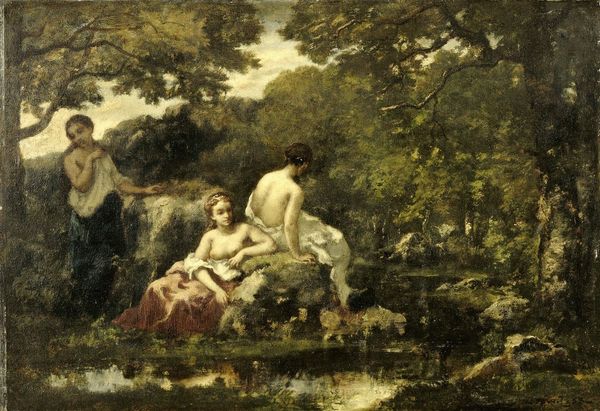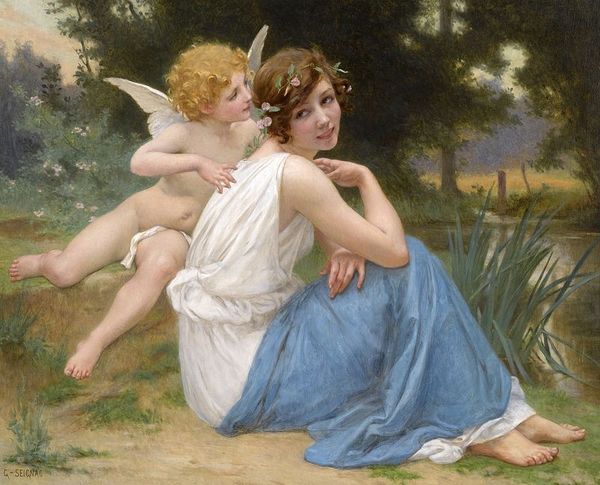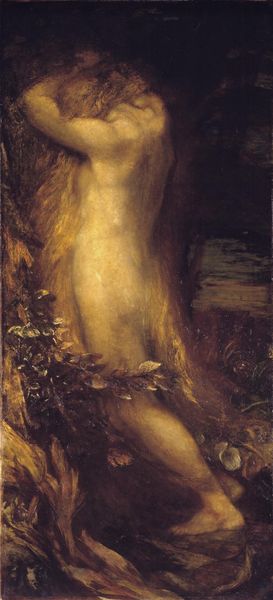
oil-paint
#
allegories
#
allegory
#
oil-paint
#
landscape
#
classical-realism
#
figuration
#
oil painting
#
mythology
#
symbolism
#
genre-painting
#
history-painting
#
academic-art
Copyright: Public domain
Curator: Ah, yes, "Allegory of Charity" painted in 1887 by Pierre Puvis de Chavannes, currently housed at the Musée d'Orsay. What strikes you first? Editor: It’s so hushed. That almost monochromatic palette of browns and grays, that dreamy, muted light – it's like witnessing a half-remembered Eden, melancholic and serene all at once. And that basket—it really seems sturdy. Curator: Precisely. This work really showcases de Chavannes' dedication to evoking feeling, to capturing mood. He isn't just painting figures; he's attempting to paint an atmosphere, using, among other things, oil-paint to blend allegory and landscape so subtly. Editor: The use of oil paint definitely adds a richness, despite the limited color palette. But I can’t help but think about the production of such a large-scale piece. What kind of support did the canvas require? What was the pigment mixing process like in 1887? There would have been whole economies surrounding that. Curator: Indeed! And looking closer, notice how the artist uses form and setting here: it’s very interesting the children at the breast reach for something. An understanding, maybe? Some higher power? This reaching is accentuated by the calm of the nurturing mother who is also actively involved with the viewer, showing almost what we could imagine is her maternal pride. Editor: That almost ghostly palette makes it tough to connect viscerally to her potential emotion though. While technically proficient, his restrained color palette limits his effectiveness in using form and setting to communicate an underlying idea in the figures and how the relate, from a modern viewpoint, or it takes some consideration to achieve, I suppose. Look at how rough and textured the dog is next to the classical almost plaster like baby’s skin. Curator: An interesting, if challenging, dichotomy, to be sure. De Chavannes walked a tightrope between timeless ideals and the very tangible realities of human experience. This particular work feels so removed from direct association to labor, so focused instead on themes. This dog, while quite detailed, is definitely not from this material realm but almost representative of the power and protectiveness within motherhood, or something more abstract still. It seems that perhaps, that his interest was more in history, figuration, or even mythology. Editor: And what were his patrons buying, precisely? An idea of maternal responsibility? Curator: Maybe a vision of simplified purity in the face of modernity’s dizzying complexities and materialism! Editor: It would have been a more serene time, or more perhaps people aspired to portray more idealogical standards of life and virtue than now, regardless of whether or not it was true! Still, looking at how the materials have lasted so well, really makes you consider whether any of us truly value or strive to use better quality materials. Curator: Agreed, but beyond material endurance, “Allegory of Charity” persists as an echo of the artist’s inner world, of human aspiration in its purest form.
Comments
No comments
Be the first to comment and join the conversation on the ultimate creative platform.
